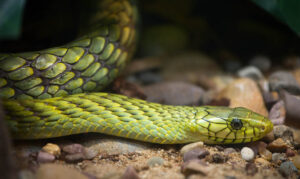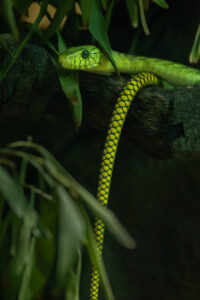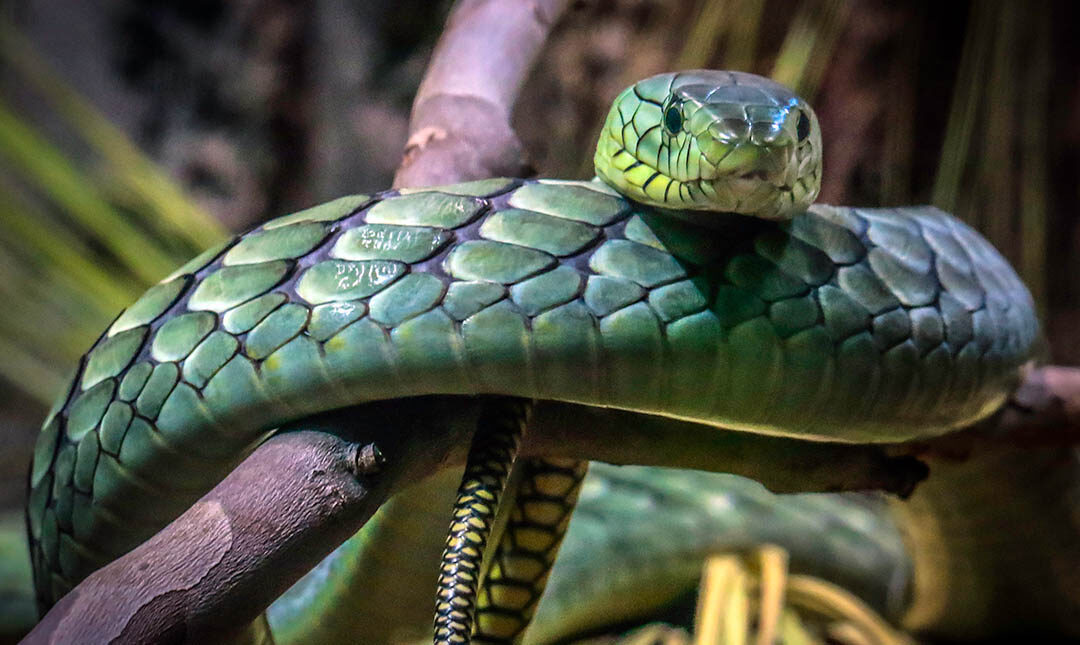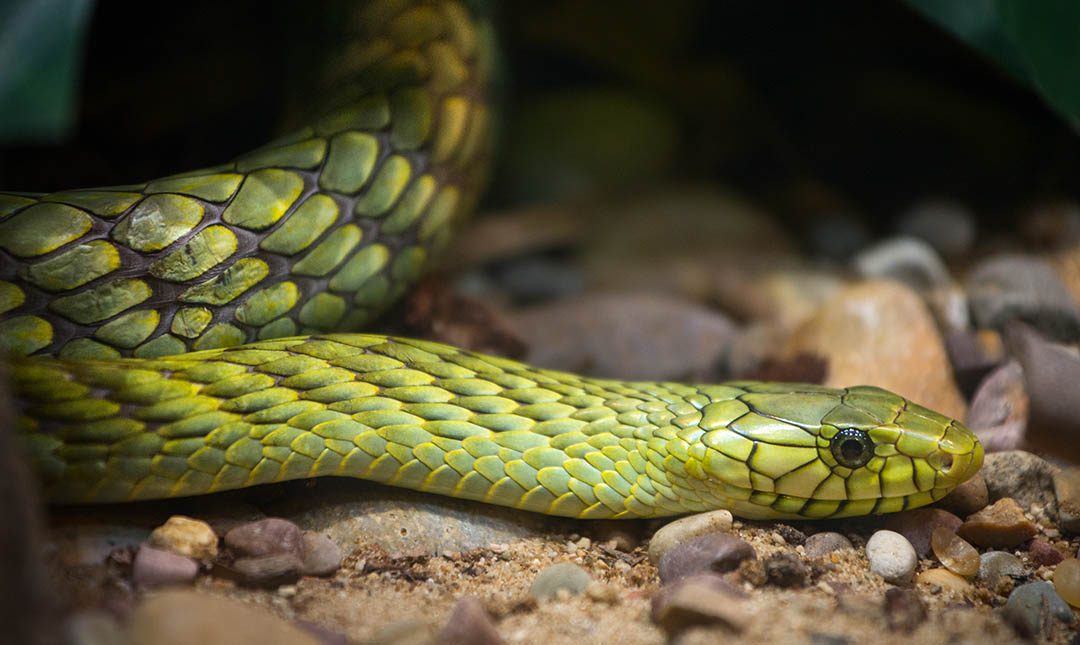About
Green mambas are found in the forests of West Africa. They are primarily solitary creatures and, luckily, they seldom come into contact with humans. If confronted, the snake will try to flee, but if cornered, it will strike quickly and repeatedly to defend itself. Untreated bites are usually fatal. The green mamba is related to some of the deadliest snakes in the Elapidae family, which includes cobras, kraits, coral snakes, and death adders. Elapid snakes’ venom is primarily neurotoxic, and it acts to paralyze its victim’s nervous system. In some cases, death can occur within minutes.
West African green mambas are active during the day and spend most of their time in the trees. This fast-moving snake actively pursues its prey through the forest canopy, striking rapidly and repeatedly until the prey succumbs to the venom. It is a very aggressive and nervous snake. This snake is also at home hunting and feeding on the ground but typically sleeps in the trees. Vibrant green coloration with some yellow highlights provides camouflage. Because they are highly venomous, green mambas have few predators other than birds of prey. During breeding season, males will seek out females by scent. Males then spar to determine the right to mate, a process that can last up to 16 hours. The female will lay a clutch of up to 14 eggs in the hollow of a tree or buried in leaf litter. The babies hatch after about 100 days.



Habitat
Green mambas are found in coastal regions of West Africa in thickets, woodlands, and tropical forests.
Diet
This snake preys primarily on birds, lizards, frogs, rodents, bats, and other small mammals.
Physical Characteristics
Body length ranges from four to seven feet, and weight is two to three pounds. Lifespan is 13 to 18 years.
LOCATION WITHIN THE ZOO
You’ll find this animal in the LAIR. See Zoo Map.



